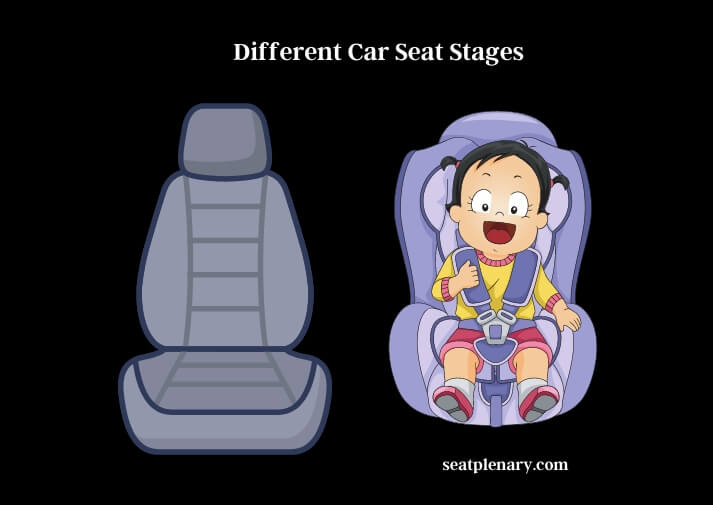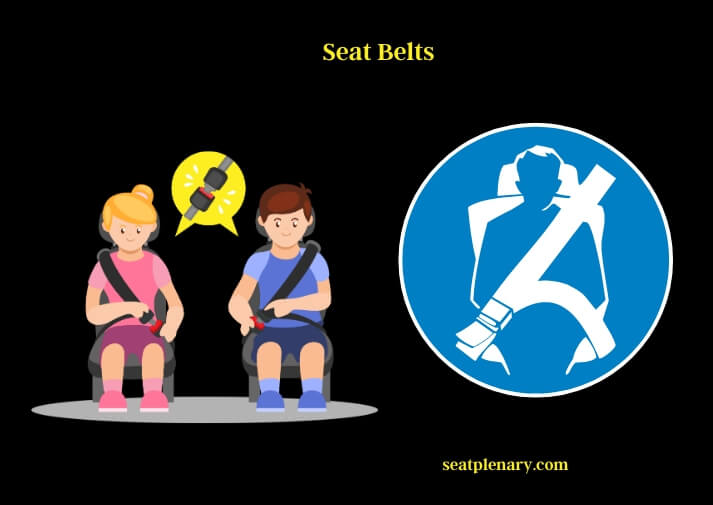As a parent, ensuring your child’s safety is always a top priority. One of the most critical aspects of child safety is proper car seat usage. Understanding the different car seat stages and how to use them correctly can make all the difference in keeping your little one safe and comfortable during car rides. In this comprehensive guide, we will walk you through the various car seat stages, from rear-facing infant seats to seat belts, and provide essential safety tips along the way.

Introduction
The Importance of Car Seat Safety
Car accidents are a leading cause of injury and death among children. Using the right car seat for your child’s age, weight, and height can significantly reduce the risk of severe injury or even save their life in the event of a crash. Proper car seat usage also helps to keep your child secure and comfortable during everyday car rides.
Understanding Car Seat Stages
Car seat stages are designed to accommodate your child’s growth and changing needs, ensuring that they are always in the safest and most comfortable seat for their size. It’s essential to recognize these stages and know when to transition your child from one to another.
Stage 1: Rear-facing Infant Car Seats
Age and Weight Guidelines
Rear-facing infant car seats are designed for newborns and babies, typically up to 12-24 months or 22-40 pounds (depending on the specific car seat model). The American Academy of Pediatrics (AAP) recommends keeping your child rear-facing for as long as possible, at least until they reach the height or weight limit of their car seat.
Types of Rear-facing Infant Car Seats
There are two primary types of rear-facing infant car seats: infant-only seats and convertible seats. Infant-only seats are designed specifically for newborns and small babies and can only be used rear-facing. Convertible car seats can be used both rear-facing for infants and forward-facing for older children.
Installation and Positioning
Proper installation is crucial for car seat safety. Make sure to follow the manufacturer’s instructions and check for a tight fit. The car seat should be installed at the correct angle, usually between 30 and 45 degrees, to ensure your baby’s head is supported and their airway is clear.
When to Move to the Next Stage
Transition your child to the next car seat stage when they reach the height or weight limit of their rear-facing seat, or when their head is within one inch of the top of the car seat shell.
Stage 2: Convertible Car Seats
Age and Weight Guidelines
Convertible car seats are designed for children who have outgrown their rear-facing infant seat but are not yet ready for a forward-facing seat with a harness. This stage is typically suitable for children between 12 months and 4 years old or up to 65 pounds, depending on the specific car seat model.
Rear-facing to Forward-facing Transition
When your child has reached the height or weight limit for rear-facing use, you can switch the convertible car seat to a forward-facing position. Always follow the manufacturer’s guidelines and ensure the car seat is installed correctly for the forward-facing configuration.
Types of Convertible Car Seats
Convertible car seats come in various designs, including those that convert from rear-facing to forward-facing, and those that can also transition into a high-back booster seat.
Installation and Positioning
As with infant car seats, proper installation is crucial. Make sure to follow the manufacturer’s instructions for the forward-facing position and ensure the car seat is securely attached to your vehicle’s seat or the LATCH system.
When to Move to the Next Stage
Transition your child to the next car seat stage when they reach the height or weight limit of their forward-facing car seat with a harness or when their shoulders are above the top harness slots.
Stage 3: Forward-facing Car Seats with Harness
Age and Weight Guidelines
Forward-facing car seats with a harness are designed for children who have outgrown their convertible car seat but are not yet ready for a booster seat. This stage is typically suitable for children between 4 and 7 years old or up to 65-90 pounds, depending on the specific car seat model.
Types of Forward-facing Car Seats
Forward-facing car seats with a harness come in various designs, including combination seats that can convert into a booster seat and harnessed booster seats that provide additional safety features for older children.
Installation and Positioning
Follow the manufacturer’s instructions for installing the forward-facing car seat with a harness, ensuring it is tightly secured to your vehicle’s seat or the LATCH system. The harness should be snug against your child’s body, with the chest clip at armpit level and the top of the harness straps at or above your child’s shoulders.
Harness Adjustments
As your child grows, you will need to adjust the harness to ensure a proper fit. Always consult the car seat manufacturer’s guidelines for adjusting the harness and maintaining safety.
When to Move to the Next Stage
Transition your child to a booster seat when they reach the height or weight limit of their forward-facing car seat with a harness, or when their ears reach the top of the car seat’s headrest.
Stage 4: Booster Seats
Age and Weight Guidelines
Booster seats are designed for children who have outgrown their forward-facing car seat with a harness but are not yet tall enough to use the vehicle’s seat belt safely. This stage is typically suitable for children between 7 and 12 years old or 40-120 pounds, depending on the specific booster seat model.
Types of Booster Seats
There are two main types of booster seats: high-back boosters and backless boosters. High-back boosters provide additional head, neck, and back support, while backless boosters are more compact and portable.
Seat Belt Positioning
Booster seats elevate your child, ensuring the vehicle’s seat belt fits correctly across their chest and lap. The lap belt should lay flat across the upper thighs, and the shoulder belt should rest snugly across the collarbone and chest.
When to Move to Seat Belts
Your child is ready to use a seat belt without a booster seat when they can sit with their back against the vehicle’s seat, their knees bend comfortably over the edge of the seat, and the seat belt fits correctly across their chest and lap.
Stage 5: Seat Belts
Age and Weight Guidelines
Children are generally ready to use seat belts without a booster seat when they are between 10 and 12 years old and at least 4 feet 9 inches tall.
Proper Seat Belt Fit and Positioning
For optimal safety, ensure that the lap belt lies flat across the upper thighs and the shoulder belt rests snugly across the collarbone and chest. The shoulder belt should never cross the face or neck, and the lap belt should not rest on the stomach.

Car Seat Accessories and Safety Tips
Car Seat Covers
Car seat covers can protect your child’s car seat from spills, dirt, and sun damage, while also providing added comfort.
Car Seat Mirrors
Car seat mirrors allow you to monitor your rear-facing child during car rides, helping to ensure their safety and comfort.
Travel Toys and Entertainment
Keep your child entertained during car rides with age-appropriate toys and activities that are safe for use in the car.
Common Car Seat Mistakes to Avoid
Familiarize yourself with common car seat mistakes, such as improper installation, incorrect harness positioning, and transitioning between stages too soon. Always consult your car seat’s manufacturer guidelines and seek professional assistance if you’re unsure about proper usage.
Summary
Key Takeaways
Understanding the different car seat stages and proper usage is crucial for keeping your child safe and comfortable during car rides. Always adhere to the manufacturer’s guidelines for age, weight, and height limits, and ensure your car seat is installed correctly. Regularly check your child’s car seat for proper fit and positioning, and adjust the harness as needed to accommodate their growth.
Frequently Asked Questions (FAQs)
Q1: When is it safe to switch from a rear-facing to a forward-facing car seat?
It is safe to switch from a rear-facing to a forward-facing car seat when your child has reached the height or weight limit of their rear-facing seat, or when their head is within one inch of the top of the car seat shell.
Q2: How do I know if my child is ready for a booster seat?
Your child is ready for a booster seat when they reach the height or weight limit of their forward-facing car seat with a harness, or when their ears reach the top of the car seat’s headrest.
Q3: What is the difference between a high-back and a backless booster seat?
High-back booster seats provide additional head, neck, and back support for your child, while backless booster seats are more compact and portable.
Q4: Can I use a second-hand car seat?
It is not recommended to use a second-hand car seat, as you may not know its history or whether it has been involved in an accident. Car seats also have expiration dates, which you may not be aware of when purchasing a used seat.
Q5: How long do car seats last before they expire?
Car seats typically last between 6 and 10 years before they expire. Always check the expiration date on your car seat and follow the manufacturer’s guidelines for proper usage and disposal.
